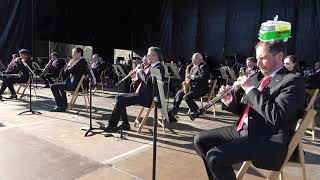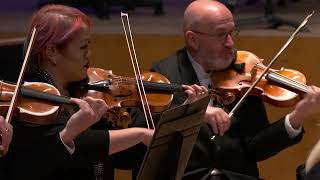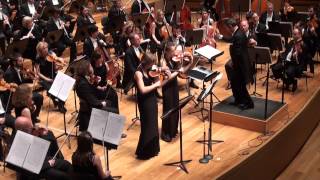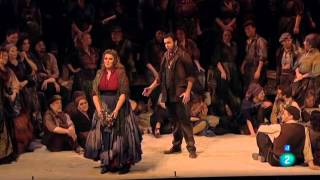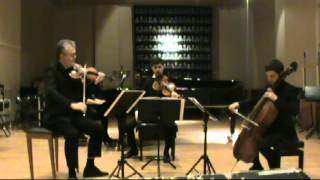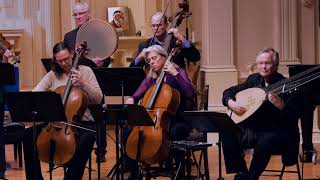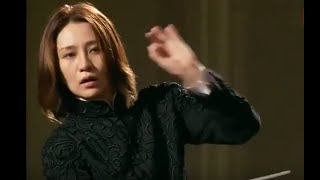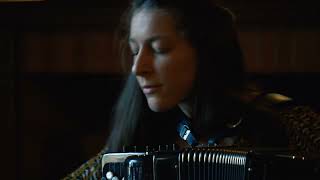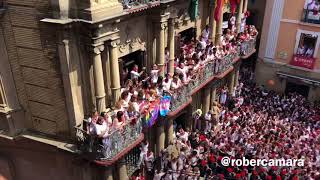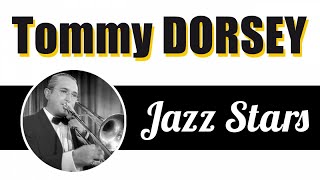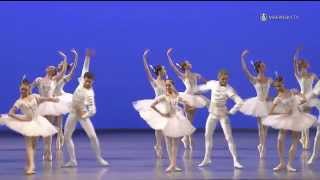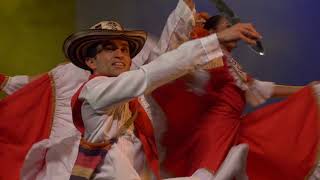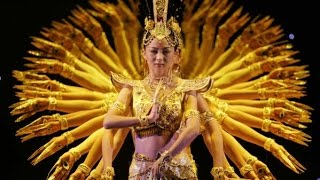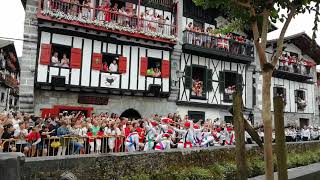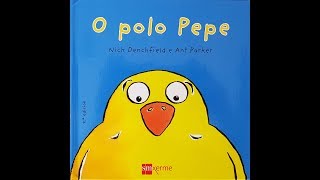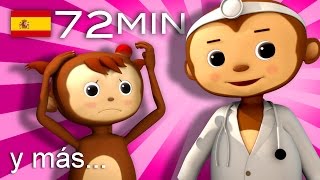At 12 noon on July 6, the San Fermín Festival begins
Recommended music videos for initiation to classical music
Gainza's Biribilketa is the first piece performed in the Sanfermines after the Txupinazo in the hallway of the City Hall , by La Pamplonesa and Txistularis from Pamplona and Navarra ,
Manuel Gainza Guipuzcoan musician who was born in Tolosa on May 18, 1885 and died in Getxo on April 1, 1943. A disciple of Gorriti and Mocoroa , he was also organist of the parish of Sestao , and director of the Orfeón Trabajo y Cultura and of the Portugalete Choral Society (1906-1907). His connection to the choral world is also reflected in the founding of the Biotz-Alai Choir of Getxo in 1926. On the other hand, he composed works for banda and for txistu, being the author of various harmonizations. Several of his compositions and harmonizations are published in the magazine Txistulari . (extracted from Auñamendi Eusko Entziklopedia)
Biribilketa Kalejira, Pasacalles, Martxa, Martxea, Karrikadantza, Basque March , ... many names to express a single reality: the meaning of these terms is very common: a light march, usually written in 6/8 time (but sometimes in 2/4). The phrases are square, sixteen measures long, although they often consist of eight repeated measures, generally with an antecedent and consequent structure. In general, they meet all the conditions of European scholarly music (extracted from Auñamendi Eusko Entziklopedia).
Franz Joseph Haydn (1732-1809), Austrian composer whose brother Michael Haydn was also a notable composer, was one of the main pillars on which classicism (1750-1810) was based. At six years of age he began his studies of harpsichord and violin. At the age of eight he was admitted as a choralist at St. Stephen's Cathedral in Vienna where he continued his musical studies. After changing his voice, he had to survive by working multiple jobs, while studying composition analyzing the works of Carl Philipp Emanuel Bach . He maintained a close friendship with Mozart and was Beethoven 's teacher. He laid the main foundations of the sonata form and the formal structure of the string quartet and the symphony. He died at the age of 77 in Vienna .
The catalog of Haydn's works . The works of Joseph Haydn are today classified according to the system created by Anthony van Hoboken and revised and completed by Robbins Landon and his wife Christa , which has been universally adopted, although it is now known that it does not accurately reflect the chronology and composition of the works. works, criteria used by Hoboken in the catalog. Each work is identified with a Roman numeral that corresponds to the category, which in most cases corresponds to a genre. Some categories have subdivisions, which are indicated with a lowercase letter and then an Arabic number appears that corresponds to the order of the specific work within the category. These figures are preceded by the word Hoboken (in memory of the catalog's author) and sometimes by Hob .
Symphony No. 44 in E minor, Hoboken I/44 , by Joseph Haydn , was composed in 1772. It is popularly known as Trauer (Funeral). The work is characteristic of Haydn 's Sturm und Drang (storm and impetus) period and consists of four movements, of which today we offer the First, Allegro con brio , in 4/4; written in sonata form, beginning with a motif of four notes played in unison; motif that appears throughout the movement. Today we offer it in a performance by the London Symphony Orchestra conducted by the eminent Canadian teacher Barbara Hannigan.
Pablo Sarasate (1844-1908) He was a composer and violin virtuoso born in Iruña/Pamplona . Precocious child whose parents, aware of their son's musical aptitudes, trained him in the study of the violin; studies that he expanded in Madrid and Paris . In 1859 he began his public career giving concerts throughout Europe and America, remaining active until his death. Its universal prestige was evident with the dedication with which eminent composers such as Max Bruch , Camille Saint-Saëns , Édouard Lalo, Henryk Wieniawski , Antonín Dvořák ... and some others headed some of their scores. He died at his home in "Villa Navarra" in Biarriz in 1908, at the age of 64.
Catalog of Sarasate's works . His works are classified by their Opus number ( from the Latin opus 'work'; op. abbreviation) which is a term used in music to catalog the works of most composers since the 17th century .
The Navarrese Jota . As the writer José María Iribarren published in the Diario de Navarra (1966): “The Navarrese jota began to penetrate the Navarrese soul in the cholera epidemic of 1885. The city of Tafalla has its medicine in the jota; Next to the sulfur bonfires, there are the rondallas to temper the spirits. In this way, the jota becomes consubstantial with Navarra , and especially with Ribera . To all this, Manuel García Matos adds: “The Navarra Jota is closely related to the Ragonese Jota A; but it presents a greater linear undulation of the phrases, with more abundant and long melismas, and is not subject to its metric regularity; It has more melodic beauty than the Aragonese one and the introduction and instrumental variations are also different.”
Navarra, op.33 is a Jota Navarra written by Sarasate for two violins and orchestra that is performed today by Matjaž Bogataj and Oksana Pečeny accompanied by the Gymnasium Kranj Symphony Orchestra conducted by maestro Primož Zevnik
Emilio Arrieta (1821-1894) was a Navarrese composer, with an outstanding theatrical production (more than 50 zarzuelas). After his studies in Italy , in 1846 he became known in Madrid as orchestra director at the Teatro del Circo ; He works as a Court composer, as a professor of composition at the National School of Music in Madrid and as its director, succeeding another Navarrese, Hilarión Eslava , a position he held until his death. Among his most notable students were Tomás Bretón and Ruperto Chapí . The music critic Fernando Pérez Ollo writes of Arrieta : «His glory is based on the decisive role he played in the consolidation of zarzuela as a genre, thanks to his melodic sense, and the technical resources—harmonic and instrumental—that his training gave him. Italian."
Marina was initially conceived as a zarzuela in two acts with a libretto by Francisco Camprodón , and thus it was premiered before an audience that reacted with absolute indifference and coldness. The transformation into an opera was promoted sixteen years later by the tenor Enrico Tamberlick who wanted to sing the work at the Teatro Real . Considering that Camprodón had already died, Arrieta entrusted the adaptation of the libretto to Ramos Carrión . The transformation required the composition of new pieces and also the elimination of some numbers. In this way, the opera , in its revival, obtained an indisputable success; Various fragments had to be repeated and Arrieta received one of the biggest ovations of his career.
The version that we offer today is conducted by the Valencian maestro Cristóbal Soler .
Recommended classical music videos
Fernando Remacha Villar (1898-1984), born in Tudela , was probably the most relevant Navarrese composer of the 20th century . He began violin studies in Tudela and later in Pamplona . He later moved to Madrid , where he attended violin classes with José del Hierro and composition classes with Conrado del Campo . In 1923 he won the Rome Prize , a scholarship that allowed him to move and study there with Gian Francesco Malipiero . In 1928 he returned to Madrid and obtained a position as a viola player in the Arbós Symphony Orchestra and was also responsible for providing music to several films by José Luis Sáenz de Heredia and Luis Buñuel . In 1930 he became one of the most representative musicians of the Generation of '27 . In 1957 he launched the Pablo Sarasate Conservatory in Pamplona .
Quartet with piano . It is a quartet written for violin, viola, cello and piano with which Remacha won in 1932 the first of the three National Music Awards that he would receive during his lifetime. It is structured in three movements: I (0´00´´) ALLEGRO MODERATO .-. II (10:00) ANDANTE .-. III (16:48) ALLEGRO LIVE and today it is updated for us by Ricardo Odriozola violin, Uzeyir Makhmudbaily viola, Georgy Imanov cello and Signe Bakke piano.
Michael Praetorius (1571-1621), real name Michael Schultze , was a German composer and organist of the late Renaissance . He was born in Creuzburg (near Eisenach, Thuringia), into a strict Lutheran family, which determined the course of his musical career. His father had been a student of Martin Luther and had assisted him in the preparation of the original Lutheran Hymnal . From 1613 to 1616 he worked at the Saxon court in Dresden , where he was influenced by the musicians of the Venetian School , such as Giovanni Gabrieli , as well as as well as contemporary composers, such as Samuel Scheidt and Heinrich Schütz. A very prolific composer, Praetorius is known today for his work Terpsichore , a collection of more than 300 French dances and melodies that he arranged.
Terpsichore or Terpsichora (Greek, 'She who delights in dance') is in Greek mythology one of the nine muses, daughter of Zeus and Mnemosyne , associated since classical times with light poetry and dance.
Voices of Music (VOM) is an American nonprofit musical ensemble based in San Francisco , specializing in the performance of early music, especially Renaissance music, and baroque compositions, using historically informed musical performance practices and instrumentation.
Dances from Terpsichore . “For this concert, we have selected six dances from the collection and have grouped them in the form of a suite”: Ballet, 0:00 .-. Courante 1:47 .-. Spagnoletta 3:11 .-. Return 5:12 .-. Pavane 6:10.-. Bourée 7:40
Piotr Tchaikovsky (1840-1893) Russian composer who graduated from the Saint Petersburg Conservatory and wrote works of different and varied musical genres, although his greatest success was with his ballets. Unfortunately, his personal life was plagued by continuous personal crises starting at the age of 14, when his mother died, and also as a result of repressed homosexuality, which forced him to enter into a marriage that only lasted a few months. He wrote more than 150 compositions, including works for piano, quartets, suites, symphonies, concertos, choirs, cantatas, operas and ballets. He died at the age of 53 and is currently considered one of the greatest composers in history.
Overture 1812 . The work begins with a religious melody from the Russian Orthodox Church , played by eight cellos and four violas, (on occasions, like the one we are witnessing today, this part of the overture is sung by an a cappella choir). It continues with a mix of traditional and military melodies, which represent the growing anguish of the Russian people upon learning that they have been invaded by the French army. The piece continues with a march presented by the brass, where the armies are heard charging to face each other in the Battle of Borodino . A repetitive, triumphant fragment of the French national anthem, La Marseillaise , serves to represent the invading army and Napoleon 's victory over the Russians.
Next, a diminuendo in the music represents the Russian retreat, avoiding direct confrontation with the French troops while leaving scorched earth. The brass march and the fragment of La Marseillaise sound again, to indicate the entry of the French into a burning Moscow . The fragment of La Marseillaise continues to play, now in diminuendo, indicating the withdrawal of the French troops, while a crescendo indicates the Russian siege. Five cannon shots accompany the advance of the Russians expressed in string instruments and brass, which prepare the field for the triumphant closing with the counterpoint between the leitmotif representing the Russian army and the Russian imperial anthem God Save the Tsar , supported by eleven cannon shots and a ringing of bells.
Today it is offered to us by the Bolshoi Symphony Orchestra with the Yuriov Chapel Choir , both conducted by the Japanese teacher Tomomi Nishimoto .
Franck Angelis (1962) is a French composer who won several international accordion competitions, such as The Grand Prix in 1979 and the Trofée Mondiale in 1981. Franck 's reputation as a composer of modern accordion literature began when his composition " Boite à Rythme " was performed and won at the international accordion competition in Klingenthal, Germany . Angelis ' compositions require technical virtuosity, great expressiveness and sensitivity of the performer; His works show the creative genius and art of their composer and his compositions are part of the programs of the greatest international accordionists. ( Accordeonworld )
The accordion is a harmonic wind musical instrument, consisting of a bellows, a tuning fork and two wooden sound boxes. At both ends the bellows are closed by wooden boxes. The right-hand part of the accordion additionally has a fingerboard with an arrangement of keys that can be piano-like ( piano accordion ) or round keys (also called buttons ); The left hand part has buttons on both types of accordion for playing bass and accompaniment chords.
Today we offer the Diptych for accordion by Franck Angelis in interpretation by Maÿlis Arrat .
Recommended music videos for all tastes
The San Fermín Festival , popularly known as Sanfermines , is a Festival of International Tourist Interest in honor of San Fermín de Amiens , which is held annually in Iruña/Pamplona, capital of Navarra/Navarra, of which it is co-patron. The celebrations begin with the launch of the chupinazo from the balcony of the City Hall , at 12 noon on July 6, and end at midnight on July 14 with Poor Me..., the farewell song.
Tommy Dorsey (1905–1956) was an American jazz musician, trombonist, and big band leader. He began his musical career at the age of 16 in the west of his city playing in the big band " The Scranton Sirens ", filling the position left by Russ Morgan . Tommy and his brother Jimmy worked in several orchestras (including those of Fred Rich, Rudy Vallee, Vincent López and, especially, Paul Whiteman) before forming the Dorsey Brothers Orchestra in 1934. Problems between the brothers themselves led to Tommy Dorsey to leave the group to form his own orchestra in 1935, just at the time when the brothers were having a big hit with the song " Every Little Movement ".
Tracklist : 00:00 - Marie .-. 02:28 - The Night We Called It a Day .-. 05:26 - Let's Have a Party .-. 08:13 - Silk Stockings .-. 11:03 - Rumba Montevideo .-. 14:20 - Who .-. 17:00 - Granada .-. 19:43 - The Tender Trap .-. 23:16 - This Is Romance .-. 26:12 - Our Love Is Here to Stay .-. 30:21 - The Left Hand Corner .-. 33:38 - Will You Still Be Mine? .-. 36:59 - Chloe .-. 40:12 - There Are Such Things.-. 42:53 - Well Git It .-. 45:55 - Trombonology
Mariah Carey (1969) is an American singer, songwriter, music producer, actress and philanthropist. Known as the "supreme songbird" by the Guinness Book of Records, it is recognized for its five-octave vocal range, its power, its melismatic style, and its use of the whistle register . Under the guidance of Columbia Records label executive producer Tommy Mottola , Carey released her self-titled debut album, Mariah Carey (1990). From this came four singles that reached first place on the Billboard Hot 100 list. In 2012 she ranked second on VH1 's list of the "100 Greatest Women in Music", only behind Madonna . Aside from her commercial achievements, Carey has won five Grammy Awards , 21 World Music Awards , 11 American Music Awards , and 15 Billboard Music Awards.
Alka Yagnik is a Gujarati (West Indian) singer from India . She has won 7 Awards for Best Playback Singer and has sung in more than 700 films. Alka Yagnik sang bhayans (Hindu religious songs) for Radio Calcutta at the age of 6. He studied under music director Laxmikant at the behest of Raj Kapoor . She debuted as a playback singer with the film Payal Ki Jhankaar (1979). He became a star with the song "Ek Do Teen" from the Bollywood film Tezaab (1988). Later he dedicated himself to film music. He has sung in many languages, Gujarati, Assamese, Oriya, Meitei, Nepali, Bengali, Bopuri, Punjabi, Marathi, Telugu, Tamil and Malayalam .
Recommended peculiar videos
Franz Liszt (1811-1886) was a brilliant Hungarian pianist and composer, whose works have endured over the years; works for solo or concert piano, as well as orchestral works, among which his symphonic poems stand out, the musical form of which he is the progenitor. Liszt 's father, an amateur musician, gave him his first piano lesson at the age of seven. In October and November 1820, at the age of nine, he appeared in concerts in Sopron and Bratislava . His father arranged for Franz to be presented to the Court of the House of Esterházy as a child prodigy. He was famous throughout Europe during the 19th century ; His contemporaries claimed that he was the most technically advanced pianist of his time and the greatest of all time.
The Hungarian Rhapsody No. 2 is part of the nineteen Hungarian Rhapsodies by composer Franz Liszt . The work consists of two different parts: the Lassan and the Friska (from Hungarian: lassú - slow; friss - fresh, fast). It was composed in 1847 and was first published as a solo piano piece in 1851 by Senff and Ricordi . This rhapsody has been used in cartoons and has been the subject of numerous modifications and versions, in addition to serving as the basis for numerous popular songs.
Today we offer an orchestral arrangement choreographed by the Mariinsky Ballet
Colombia alive . It is a journey from north to south and from east to west through the cultural diversity of the country, bringing to the stage the majesty of dances such as San Agustín, the cumbia, the hallway, the sanjuanero, the currulao, the joropo, the Mapalé , among others. , showing a magical, exuberant and diverse Colombia . (Extracted from the Antioquia Folkloric Ballet Website).
The Colombia Viva show has gone around the world, exciting thousands of people in Peru, Ecuador, Panama, Mexico, Honduras, United States, Spain, Germany, Poland, France, Italy, Finland, Holland, Russia, Japan, China . .. (Extracted from the footer of the same video).
The dance of a thousand hands is performed by 21 dancers, all of them deaf and mute. It is done only by the signals of four coaches located in the corners of the stage. This dance is in honor of Guan Yin , the bodhisattva of the composition and who is venerated by Buddhists in East Asia . Bohdhisattva is a Buddhist term that refers to someone who is on the path of the Buddha in a significant way. It is a dance studied to the millimeter so that its perfect coordination leaves your senses dazzled; dance full of exoticism and precision, it is a true work of art that premiered in Athens in 2004 at the closing of the Paralympic Olympics . This dance carries a motto: "As long as you are kind and there is love in your heart, a thousand hands will naturally come to your aid." (Extracted from the article “Va de bailes”)
Lesakako Zubigaineko dantza (The Dance on the Lesaka Bridge) is one of the most popular dances in the Basque Country . Coinciding with the San Fermín festival, on July 7, the espatadantzaris of Lesaka dance the Zubigain ("On the bridge") on the parapet of the bank of the Onin river. It is a great day for the Lesakarras; and for those who dance the Zubigain , without a doubt the most emotional moment of the party. It seems that this dance is a memory of the peace pact between the neighborhoods of this town in the 15th century . However, outside of history, some specialists have seen it closely related to the rituals of the San Juan solstice. In reality, it may be a ritual that emerged from different traditions. It is noteworthy that on San Fermín Day 2019 , for the first time in history, three women performed as swordsmen after several years of rehearsals.
Recommended music videos for children
Various Wikipedia articles have been used to write these texts.
The texts of Videomusicalis are written in Basque, Spanish and English.





